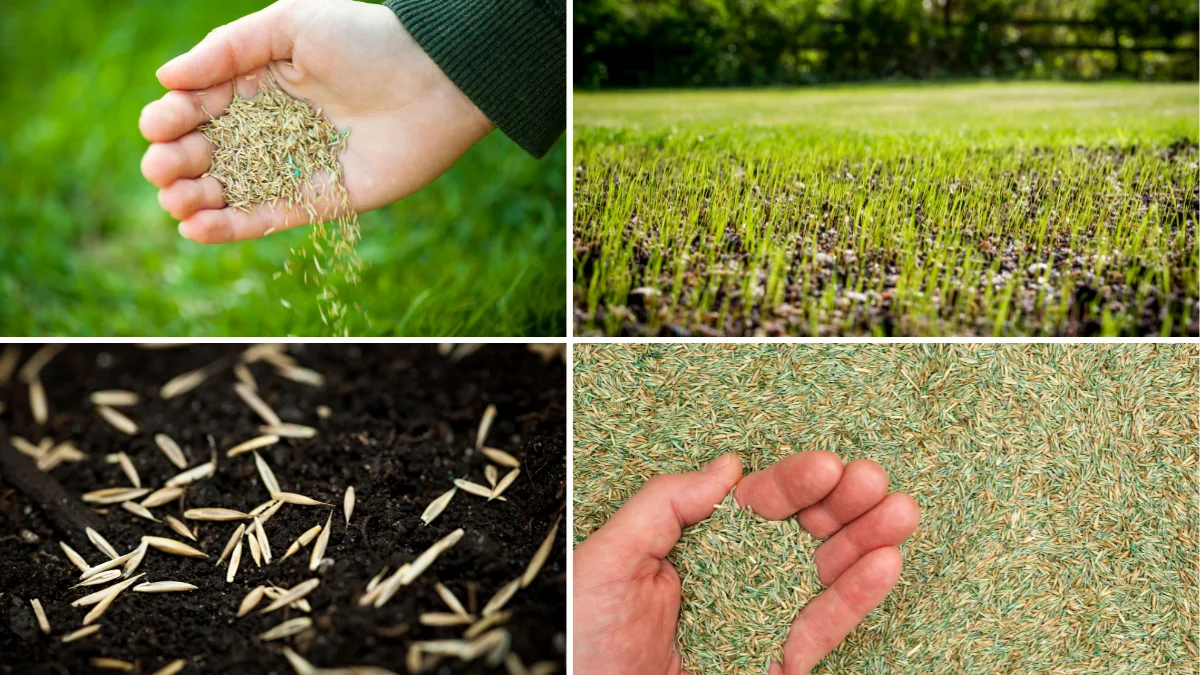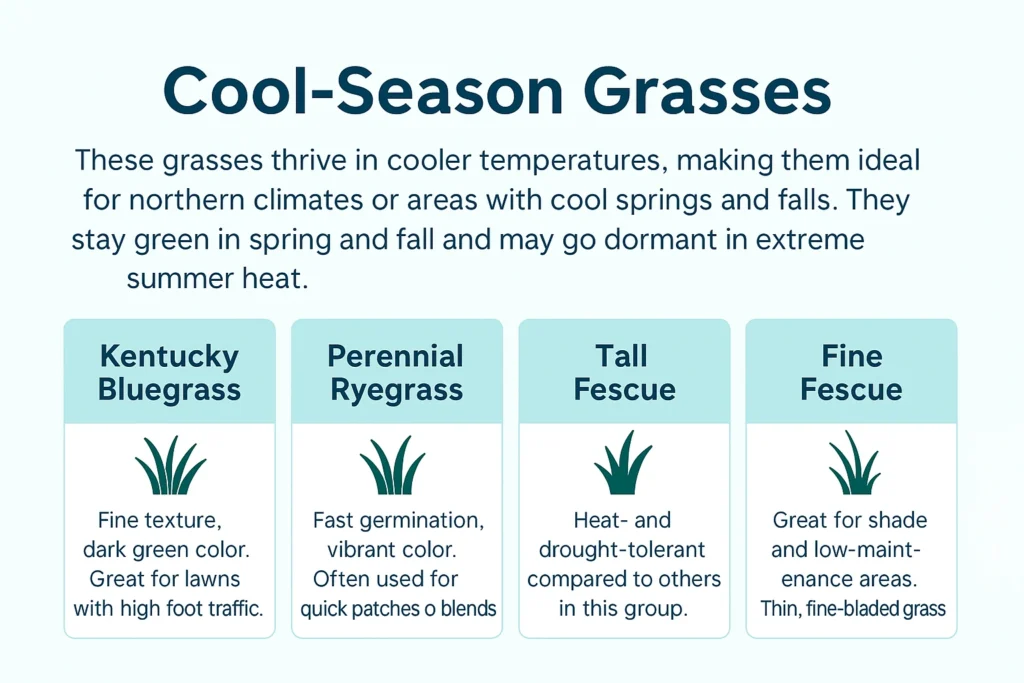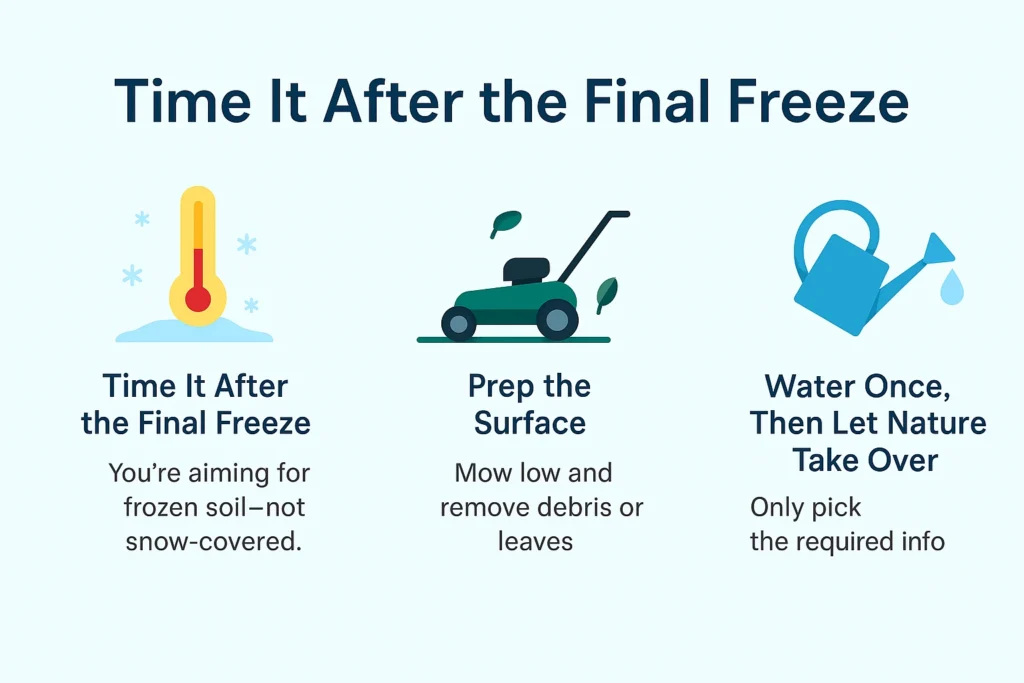How to Plant Grass Seed in Winter: A Complete Dormant Seeding Guide

If you’ve missed the fall seeding window, you’re probably wondering when to plant grass seed in winter—or if you even should. The short answer: it’s possible, but it depends on where you live, what you’re planting, and whether you’re willing to wait for spring to see results. Dormant seeding—planting grass seed in winter so it germinates come spring—can be a smart strategy in the right conditions. In this guide, we’ll explore how to do it right.
This isn’t a one-size-fits-all answer. Grasses behave differently depending on type, soil temperature, moisture, and how deeply winter has set in. So before you spread seed on frozen ground and hope for the best, it’s worth understanding what works and why.
Table of Contents
Is Winter a Good Time to Plant Grass Seed?
Let’s start by saying that winter is not the traditional growing season for grass. Seeds don’t germinate in cold soil. But that doesn’t mean planting grass in winter is off the table.
The practice of dormant seeding involves sowing grass seed during the coldest months—after the ground has frozen but before heavy snowfall. The seed stays dormant until soil temps rise in early spring, at which point it germinates naturally with the thaw.
When to plant grass seed in winter depends on timing it after your region’s final hard freeze but before snow insulates the surface.
Dormant seeding works best for cool-season grasses. These grasses are genetically adapted to thrive in cooler climates and will respond as soon as spring temperatures climb into the 50s (Fahrenheit).
Best Regions to Plant Grass in Winter
Dormant seeding isn’t for everyone. The ideal zones are:
- USDA Zones 4–7, where hard freezes are guaranteed but winters aren’t extreme enough to damage exposed seeds.
- Northern states like Michigan, New York, and Ohio where cool-season grasses like Kentucky Bluegrass and Perennial Ryegrass are popular.
- Transition zones that don’t get too much snowpack or winter flooding.
Avoid dormant seeding in areas with heavy snow drifts, standing water, or unpredictable freeze/thaw cycles that can push seeds out of place.
🔍 Not sure what zone you’re in? You can look up your zone here.
Grass Types That Grow Well When Planted in Winter
Before diving into steps and tips, let’s get to know the grasses that actually benefit from winter seeding. Not every lawn seed will tolerate being broadcast onto cold soil.
Kentucky Bluegrass
A hardy perennial, Kentucky Bluegrass spreads by underground rhizomes and thrives in northern climates. It’s slow to establish but incredibly resilient once rooted. Dormant seeding works particularly well with Bluegrass when timed before snowfall.
Perennial Ryegrass
Known for its quick germination and fine texture, Perennial Ryegrass can struggle in heat but does well in cool climates. If seeded in winter, it will typically sprout within 7–10 days of spring warm-up.
Fine Fescue
This group includes Creeping Red, Hard, and Chewings Fescue. All are shade-tolerant and drought-resistant. Dormant seeding allows Fescues to germinate as soon as soil temps rise, with less weed competition.
Warm-season grasses like Bermudagrass or Zoysia, on the other hand, should not be planted in winter. These require warm soil and full sun to germinate and will simply die off or rot in freezing ground.
Knowing when to plant grass seed in winter also means understanding which of these grasses works for your region and soil conditions.
Tips for Planting Grass Seed in Winter
When to plant grass seed in winter depends on local temperatures and ground conditions, not the calendar.
Here’s how to get it right:
Time It After the Final Freeze
You’re aiming for frozen soil—not snow-covered. Seeding too early could result in premature germination. Wait until your lawn is consistently frozen and daytime highs are under 40°F.
Prep the Surface
Mow low and remove debris or leaves. The seed needs direct contact with soil to settle and stay put through winter.
Use the Right Rate
Spread seed at 10–15% higher than usual, since you’ll lose some to runoff or birds. Our Grass Seed calculator can help dial in the correct coverage for your lawn size and grass type.
Water Once, Then Let Nature Take Over
Watering isn’t needed after planting. In fact, do not water—you risk waking the seed too early. Moisture from melting snow and spring rains will take care of germination.
Without proper prep, knowing when to plant grass seed in winter won’t be enough. Soil and water are equally critical.
Mistakes to Avoid When Seeding in Winter
- Seeding too early — If soil hasn’t frozen yet, your seed may germinate prematurely and die in the next frost.
- Seeding on snow — It might feel intuitive, but snow is slippery and seeds won’t stay put. Wait until snow clears and soil is accessible.
- Ignoring slope and drainage — Seed runoff is real. On hills, consider gently raking or pressing seed into the ground.
- Using warm-season grasses — These won’t survive winter seeding.
When to plant grass seed in winter isn’t about a specific month—it’s about knowing when not to plant. The window for when to plant grass seed in winter is narrow—missing it can set your lawn back a whole season.
What If You Miss the Window?
If you miss your winter seeding opportunity, wait until spring soil temperatures hit 50–65°F consistently. That’s the sweet spot for most cool-season varieties.
Alternatively, consider:
- Hydroseeding (for larger areas)
- Sod installation (instant lawn, higher cost)
- Prepping now for fall — the absolute best time for long-term grass health in most regions
Dormant seeding gives you a jump start—but fall still wins if you can wait.
FAQs
Can you plant grass seed in winter and still get results?
Yes, if you plant after a hard freeze and use cool-season seed, you’ll likely see germination in early spring.
How late is too late to plant grass seed?
Once snowfall is consistent or ground is no longer exposed, it’s too late. Also avoid mid-winter thaws, which can confuse seeds into sprouting.
Do I need to fertilize after winter seeding?
Not immediately. Wait until germination starts in spring, then apply a starter fertilizer to support root development.
What is dormant seeding?
Dormant seeding is the process of spreading grass seed on frozen ground during winter so it remains inactive until spring, when it naturally germinates with rising soil temperatures.
State-by-State Grass Seeding Guides
Looking for region-specific advice? Check out our local planting calendars:
- When to Plant Grass Seed in Michigan – Cool-season turf thrives in late summer to early fall
- When to Plant Grass Seed in Pennsylvania – Spring or fall planting depending on your zone
- When to Plant Grass Seed in Colorado – Tackle variable weather and dry conditions with timing tips
- When to Plant Grass Seed in Texas – Learn the best times for Bermuda, Zoysia, and more
- When to Plant Grass Seed in Ohio – Best practices for cool-season grasses in Midwest climates
- When to Plant Grass Seed in Illinois – Avoid windburn and frost with season-specific tips
- When to Plant Grass Seed in Georgia – Focus on warm-season varieties and irrigation timing
- When to Plant Grass Seed in Florida – Seeding around tropical rain patterns and heat
- When to Plant Grass Seed in California – Different zones mean different seeding calendars
- When to Plant Grass Seed in North Carolina – Tips for Piedmont, coastal, and mountain regions
- When to Plant Grass Seed in Tennessee – Regional breakdowns for transitional planting zones
Tools, Guides, and More
Still unsure when to plant grass seed in winter? Use our free tools:
- ✅ Grass Seed Calculator
- ✅ Lawn Fertilizer Calculator – Apply the right amount of nutrients based on lawn size and grass type
- ✅ Lawn Mowing Cost Calculator – Estimate mowing expenses by lawn size, frequency, and contractor pricing
- ✅ Lawn Care Cost Calculator – Budget for overseeding, watering, fertilizing, and more
For more in-depth advice on how sowing timing affects germination, read this expert-backed Conservation Evidence guide.
Final Thoughts
When to plant grass seed in winter depends more on your soil than your schedule. With dormant seeding, you’re preparing for success in spring—not rushing it in winter. If your ground is frozen, the air is cold, and the seed is right, you’re good to go.
Don’t force it. A well-timed, hands-off winter planting can mean one less thing on your spring to-do list—and a stronger, fuller lawn to show for it.


